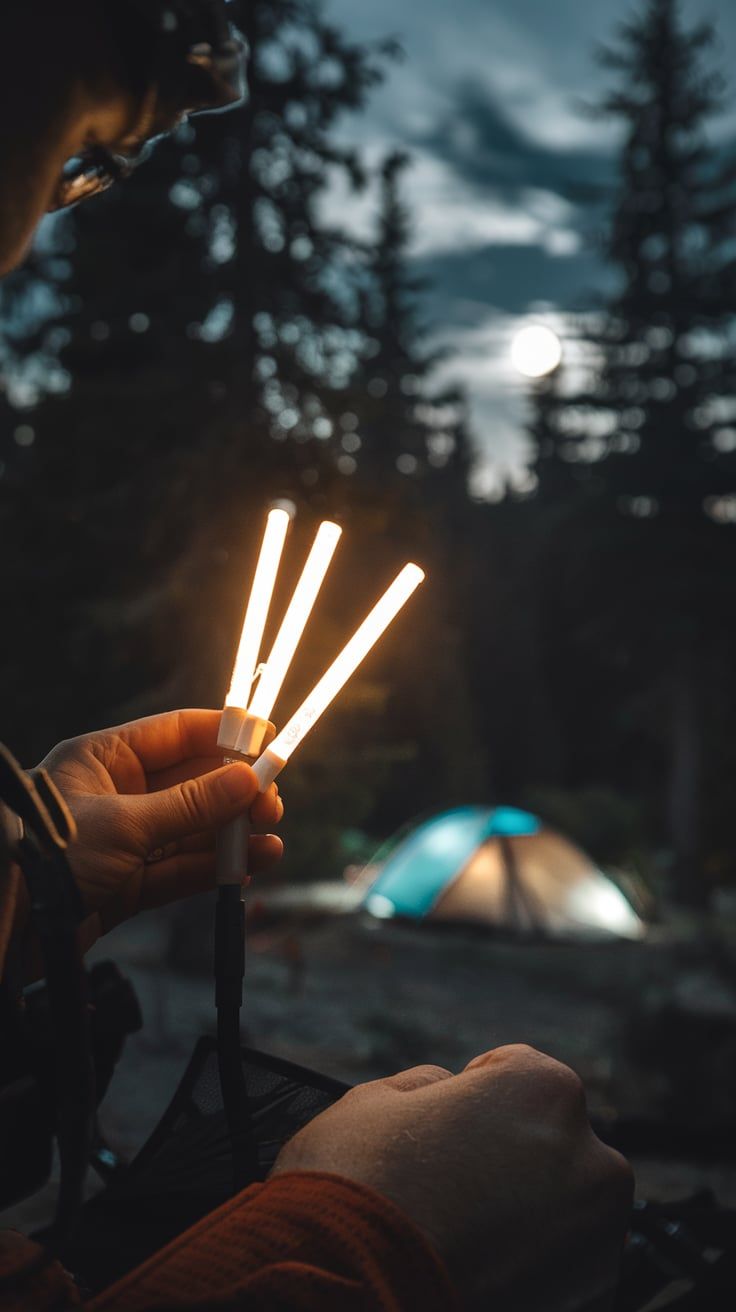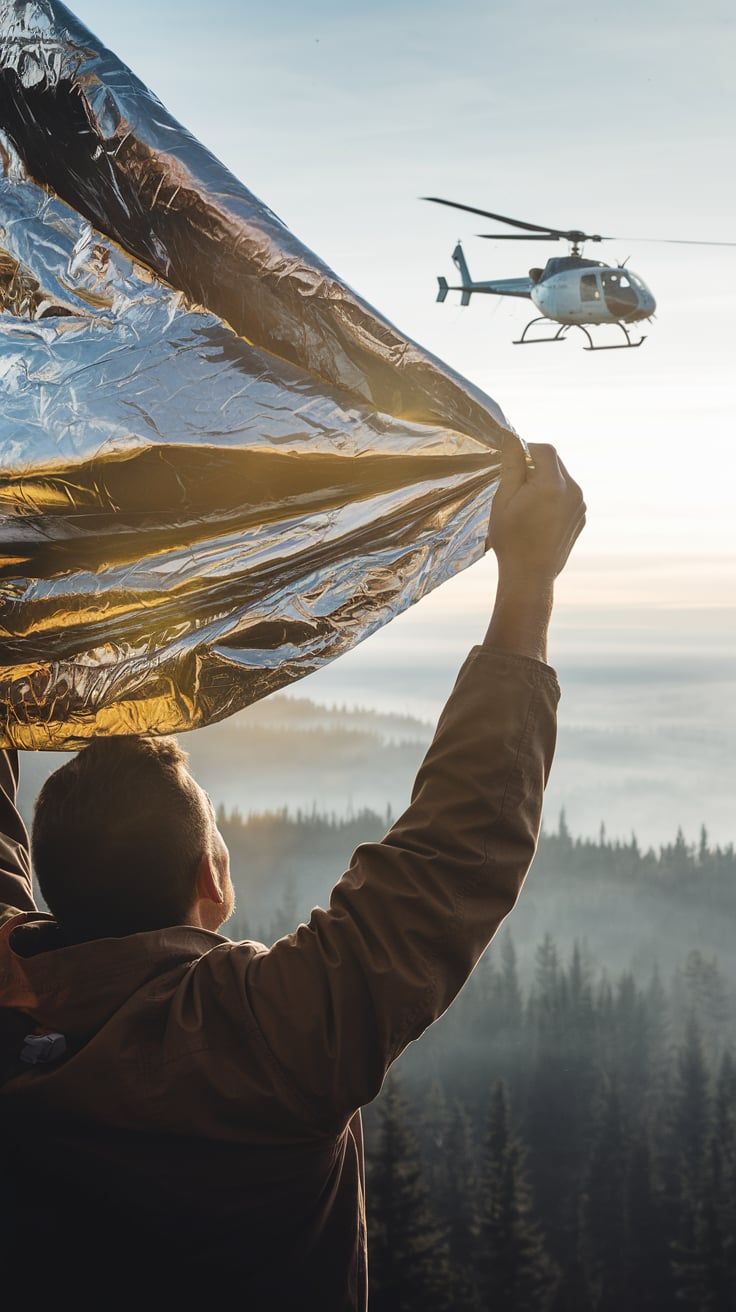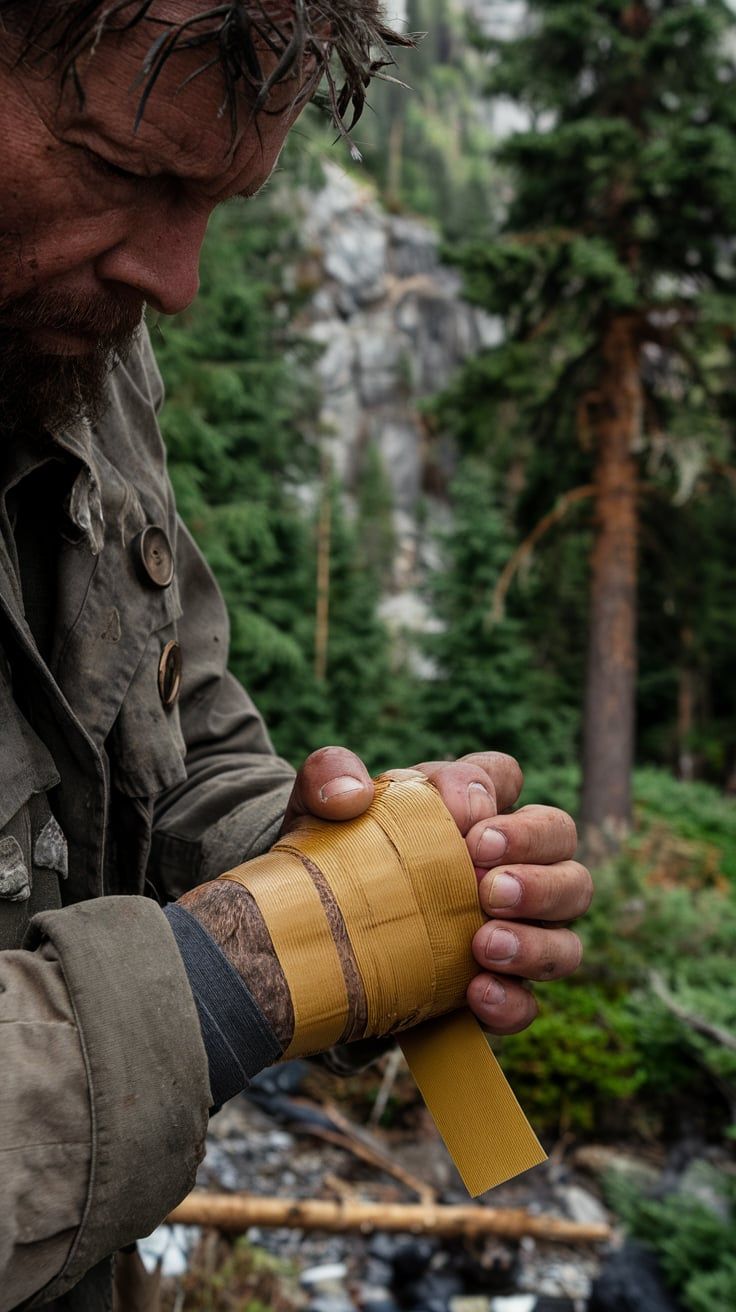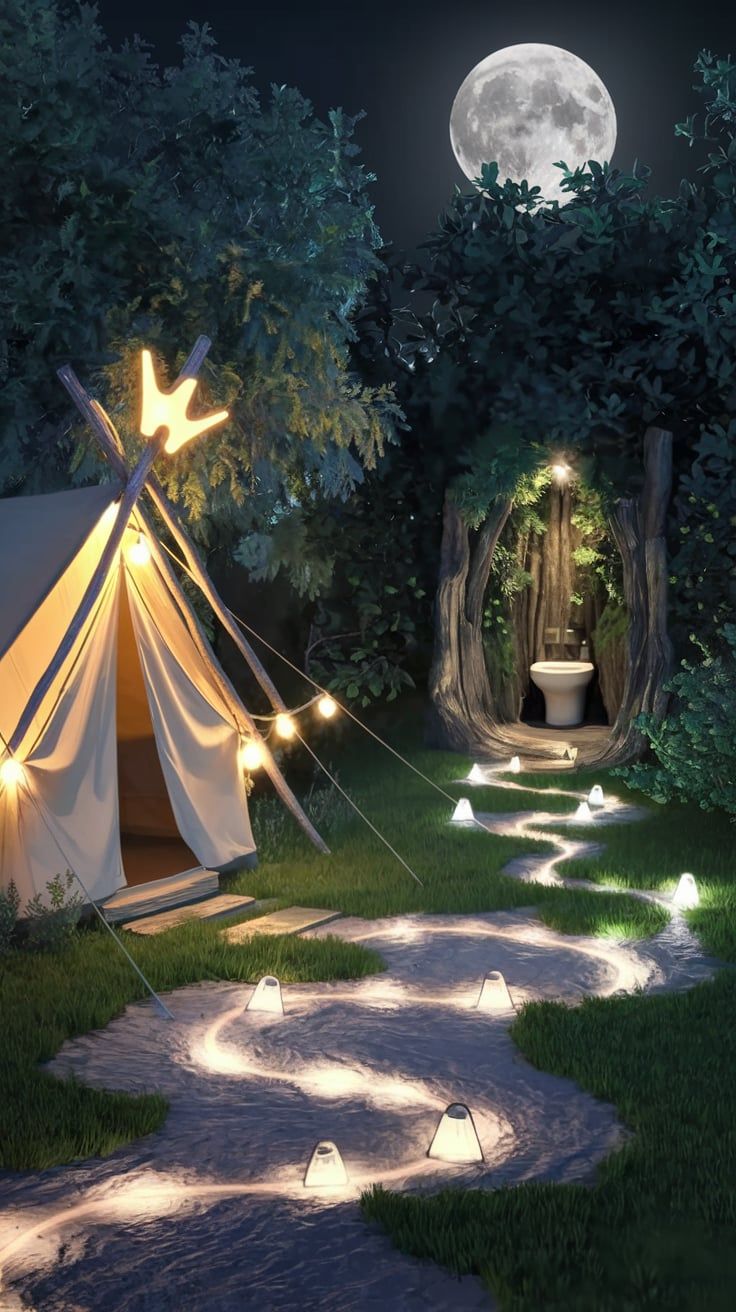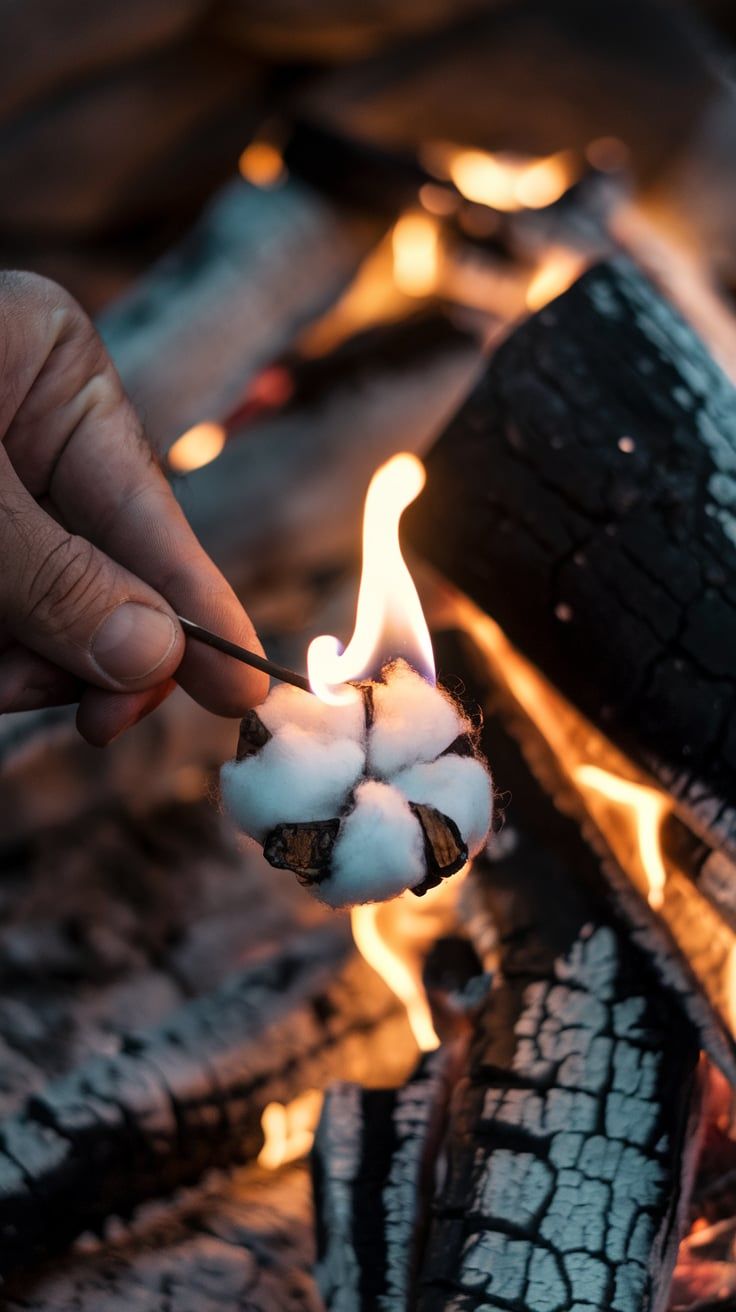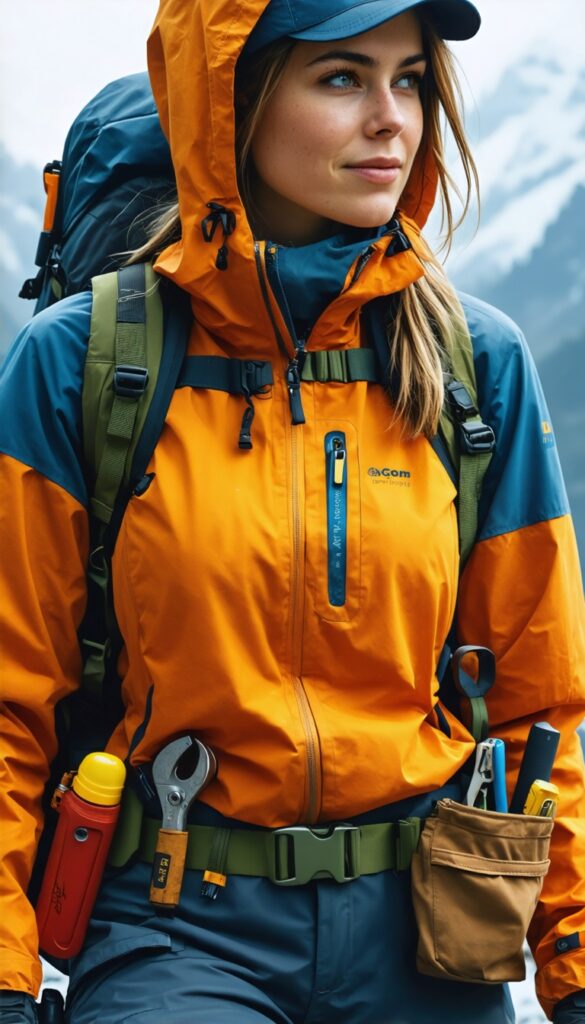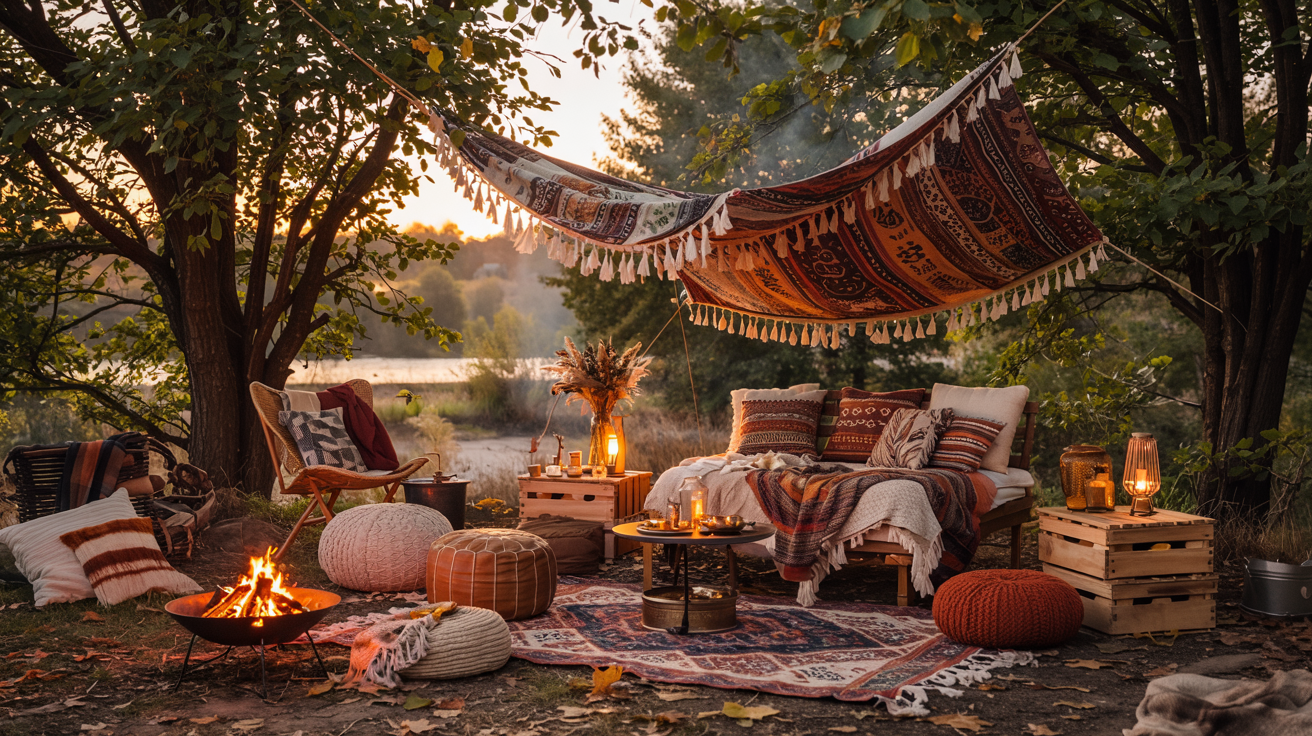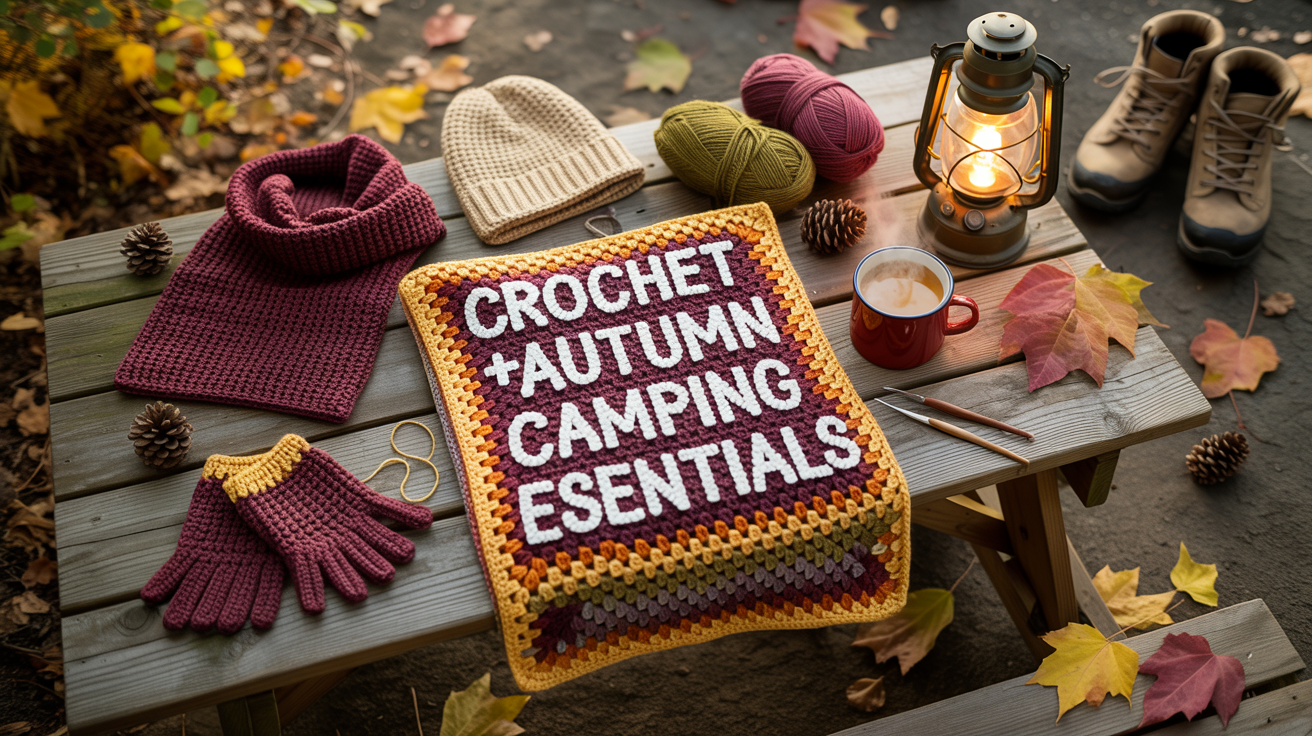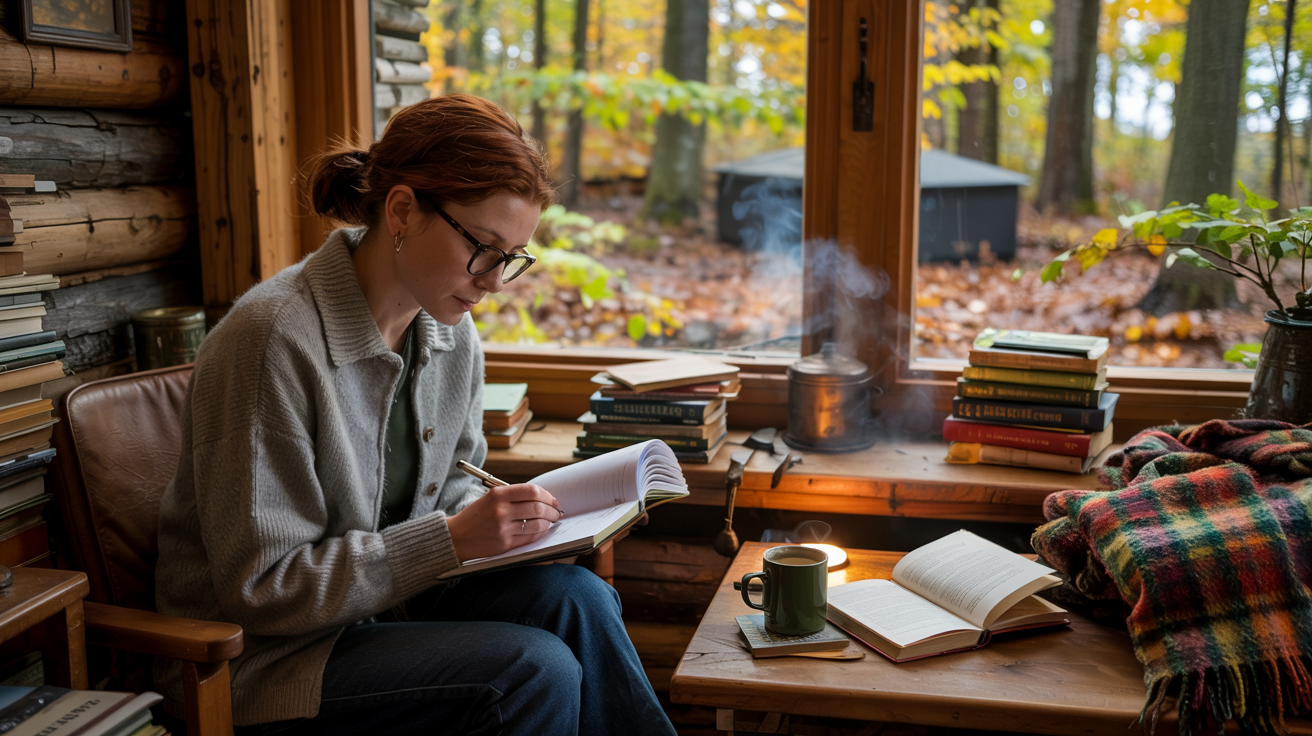Camping is a great way to disconnect from daily life and immerse yourself in nature. Whether you’re planning a solo camping trip, a family adventure, or a girl scout camping weekend, it’s crucial to be prepared.
These camping safety tips and camping tricks will ensure that you stay safe, comfortable, and ready for anything in the great outdoors.
Safety Hacks: Smart Ways to Protect Yourself
1. DIY Personal Alarm Using a Whistle & Glow Sticks
One of the best camping safety essentials is a whistle. Attach glow sticks to it so it’s easy to find in the dark. If you ever feel unsafe or get lost, use three short blasts to signal for help. Glow sticks also provide visibility at night, making it easier for others to locate you if necessary. This simple yet effective tool is a must-have for tent camping safety, especially for those who enjoy solo camping or hiking in remote areas.
RELATED: 19 Beach Day Essentials For Moms With Kids!
2. The Lip Balm Secret: Hidden Emergency Fire Starter
Did you know that lip balm can double as a fire starter? Apply some to a cotton ball and use it as a quick and effective campfire starter. Lip balm contains petroleum, which is highly flammable, making it an excellent fire accelerant. Simply rub some on dry twigs or leaves before lighting them, and you’ll have a fire going in no time. This trick is a lifesaver when your kindling is damp or if you forgot your usual fire-starting supplies.
3. Wilderness Self-Defense: Simple Tools That Fit in Your Pocket
Keeping a camping gear DIY self-defense kit with you is essential, especially for women camping alone. A whistle, pepper spray, and a tactical pen can all be compact yet powerful tools in case of an emergency. A tactical pen can break glass, be used as a weapon, or even write on damp paper.
Carrying a small flashlight with a strobe function can help deter threats and illuminate dark trails at night. These small items fit easily in your pocket or backpack and can provide an added layer of safety in the wilderness.
RELATED: 18 Space-Saving Camping Hacks for Packing Light!
4. How to Leave a ‘Breadcrumb Trail’ Without Technology
If you’re worried about hiking safety, marking trees or rocks with biodegradable tape or natural markers like stacked stones can help you keep track of your path without harming the environment. This is particularly useful in areas where GPS signals are unreliable.
Another method is using colorful ribbons or pieces of cloth that can be easily removed later. Taking photos of key landmarks along your route can help you retrace your steps. These techniques ensure that you can navigate unfamiliar trails with confidence and avoid getting lost.
5. Tinfoil Trick: The Unexpected Way to Signal for Help
Carrying aluminum foil? Use it as a mirror to reflect sunlight and signal rescuers in an emergency. This technique is especially useful when you’re stranded in a remote area without cell service. Simply fold the foil into a flat, firm shape and use it to catch and reflect the sun’s rays.
You can also shape it into a small parabolic dish to concentrate sunlight for fire-starting. Lightweight and multipurpose, aluminum foil is a great addition to your camping necessities.
RELATED: 10 Genius Camping Essentials You Didn’t Know You Needed!
Health & Hygiene: Stay Fresh in the Wild
6. The Dry Shampoo Hack: Keep Hair Fresh Without Water
A tent camping must-have is dry shampoo or cornstarch. It keeps your hair clean and grease-free when showering isn’t an option. Sprinkle a little at your roots, let it sit for a few minutes, and brush it out for fresh-looking hair. Cornstarch absorbs oil and sweat, making it a great natural alternative.
For a pleasant scent, mix it with a few drops of lavender or peppermint essential oil. This hack is perfect for long camping trips when showers aren’t available.
7. DIY Bug Repellent Perfume Using Essential Oils
Mix tea tree, lavender, and citronella essential oils for a natural bug repellent. Bugs, especially mosquitoes, are repelled by these scents. Mix a few drops of each oil with water and witch hazel in a small spray bottle. Apply it to exposed skin and clothing before heading outdoors. Unlike chemical sprays, this DIY repellent is non-toxic and smells great. Plus, it can double as a refreshing body mist on hot days!
8. No Shower? No Problem! The Cornstarch & Baking Soda Deodorant Trick
Stay fresh with a DIY deodorant using baking soda and cornstarch. A must for tent camping safety in hot weather! Simply mix equal parts of cornstarch and baking soda, then apply a small amount under your arms.
This natural deodorant helps absorb sweat and neutralize odors without any harmful chemicals. You can also add a few drops of essential oils like tea tree or lavender for extra antibacterial properties. Pack it in a small, resealable container for easy application on the go.
9. Nature’s Toilet Paper: Unexpected Leaves That Are Safe to Use
If you run out of toilet paper, learn to identify soft, non-toxic leaves like mullein and lamb’s ear as safe alternatives. These plants are naturally soft, durable, and abundant in many camping areas.
However, always research local flora beforehand to ensure you’re not using anything that may cause skin irritation. Carrying a small camping checklist of safe plants can be a lifesaver in the wild.
10. Period Prep: How to Stay Comfortable and Clean Outdoors
Use a menstrual cup or biodegradable sanitary products to maintain hygiene and reduce waste while camping. Menstrual cups are reusable, easy to clean, and eliminate the need for disposable products.
If you prefer pads or tampons, opt for biodegradable versions and pack a small, sealable bag to store used items until you can properly dispose of them. Staying prepared ensures you stay comfortable and confident in the wilderness.
Food & Water: Stay Nourished & Hydrated
11. The Mason Jar Meal Prep Hack for Campfire Cooking
Prepare individual meals at home in mason jars and store them in a cooler. These make for quick, no-fuss campfire meals that require minimal preparation. Simply pour the ingredients into a pot over the fire and cook. This camping trick saves time and reduces mess, making it perfect for both solo campers and families.
12. DIY Solar-Powered Water Purifier Using a Plastic Bottle
Fill a clear plastic bottle with water and leave it in direct sunlight for at least six hours. The UV rays kill bacteria, making the water safe to drink. This camping safety tip is particularly useful in emergencies or when you’re running low on filtered water.
13. Citrus Candle Hack: A Natural Way to Repel Bugs While Cooking
Hollow out an orange, fill it with melted wax and a wick, and light it. The citrus scent repels bugs while adding ambiance to your campsite. This camping gear DIY hack keeps pests away from your food and adds a cozy glow to your tent area.
14. One-Pot Magic: Easy, No-Fail Recipes That Require Zero Cleanup
Pack camping necessities like pre-chopped veggies and proteins in ziplock bags for easy, mess-free one-pot meals. Cooking everything in a single pot reduces the need for multiple dishes and makes cleanup a breeze.
15. How to Keep Food Cold Without a Cooler
Freeze water bottles and use them as ice packs in your food bag. As they melt, you’ll have fresh drinking water while keeping perishables cold. This tent camping must-have is an excellent hack for lightweight campers who don’t want to carry bulky coolers.
Survival & Comfort: Hacks to Stay Prepared
16. Duct Tape Bandages: A First-Aid Hack for Emergency Wounds
Duct tape is one of the most versatile items in any camping gear DIY kit. If you get a cut or scrape and don’t have a bandage, you can create a waterproof covering by placing a piece of gauze over the wound and securing it with duct tape. This makeshift bandage keeps dirt and moisture out until you can properly clean and dress the wound.
17. Emergency Blanket Dress: Stay Warm Without a Sleeping Bag
An emergency blanket is a tent camping must-have in case of unexpected cold weather. If your sleeping bag isn’t warm enough, wrap the blanket around you like a poncho to trap body heat. You can also use it as an extra layer under your sleeping bag for insulation against the cold ground. Lightweight and compact, it’s an essential survival item.
18. Glow-in-the-Dark Tent Markers for Midnight Bathroom Trips
Navigating a campsite in the dark can be tricky. Apply glow-in-the-dark paint or stickers to your tent stakes, zippers, and pathways leading to the restroom area. This prevents accidental trips and makes it easier to find your way back to your tent without using a flashlight.
19. The Vaseline Cotton Ball Trick: Start a Fire in Seconds
Cotton balls soaked in Vaseline are excellent fire starters. Store them in a small, waterproof container and use them when needed. Even in damp conditions, these fire starters will burn long enough to ignite kindling, making them an essential camping trick for cold or wet weather.
20. Shoe Box Emergency Kit: Everything You Need in a Tiny Space
Pack a small shoebox with first-aid supplies, a flashlight, a multi-tool, waterproof matches, and emergency snacks. This compact kit ensures you have essential survival tools within reach in case of an unexpected situation. Keep it in your backpack or car for easy access.

